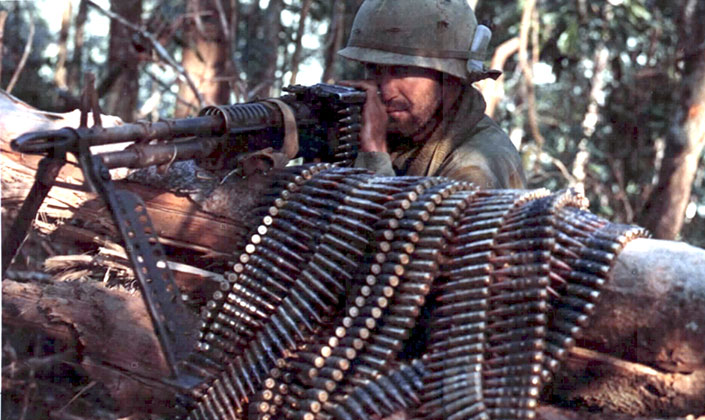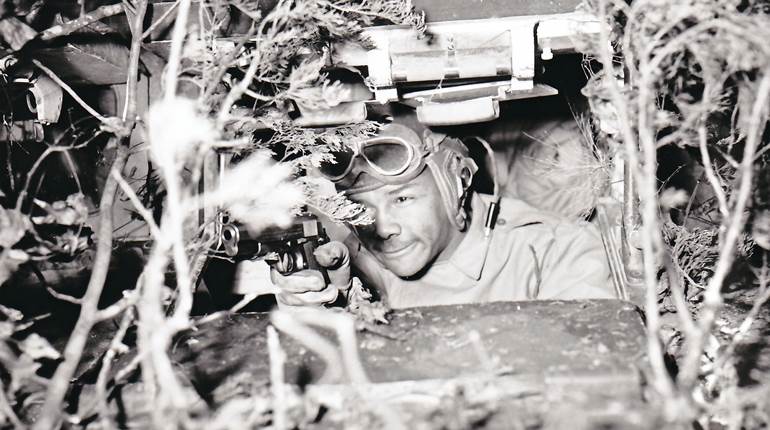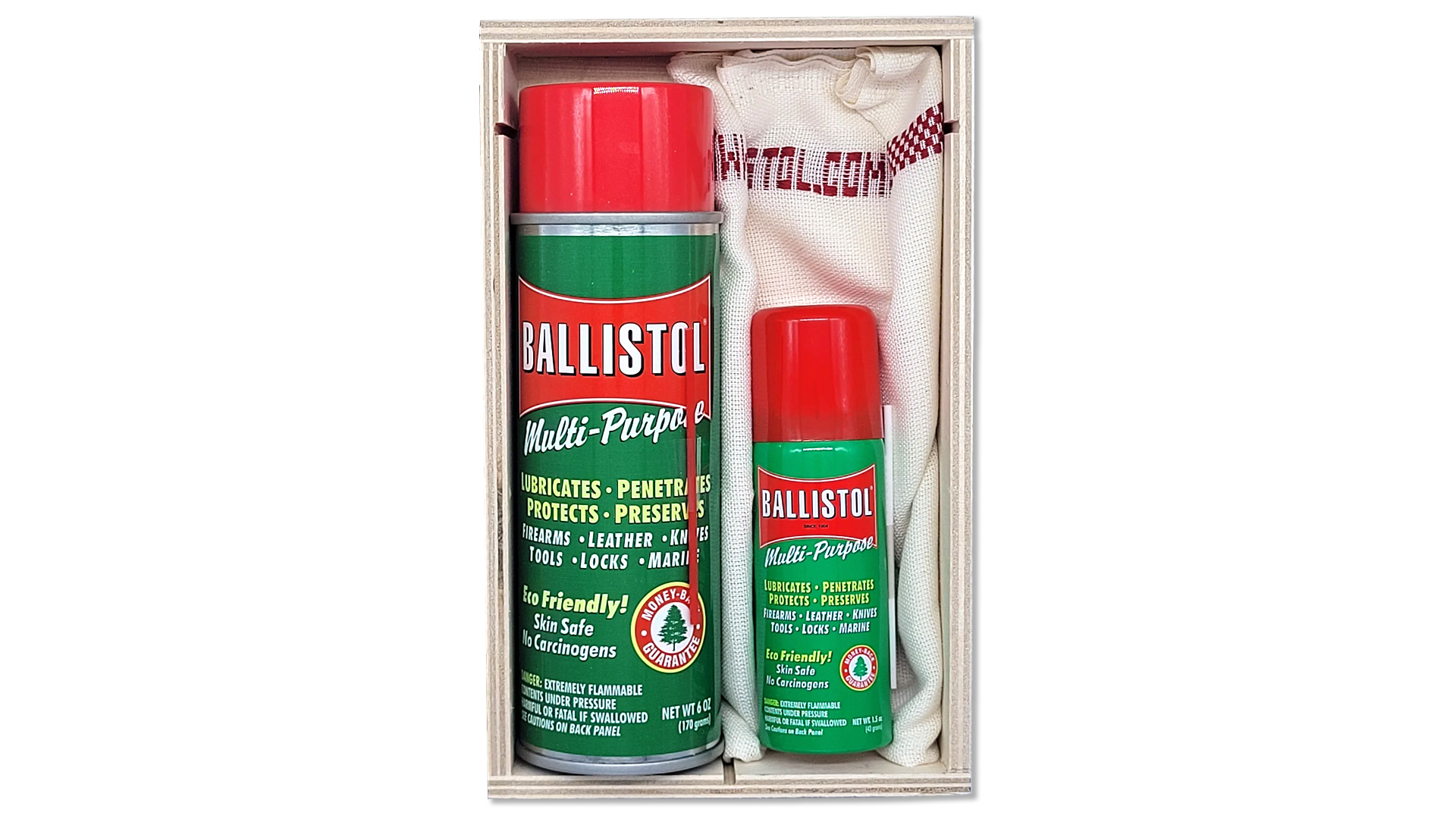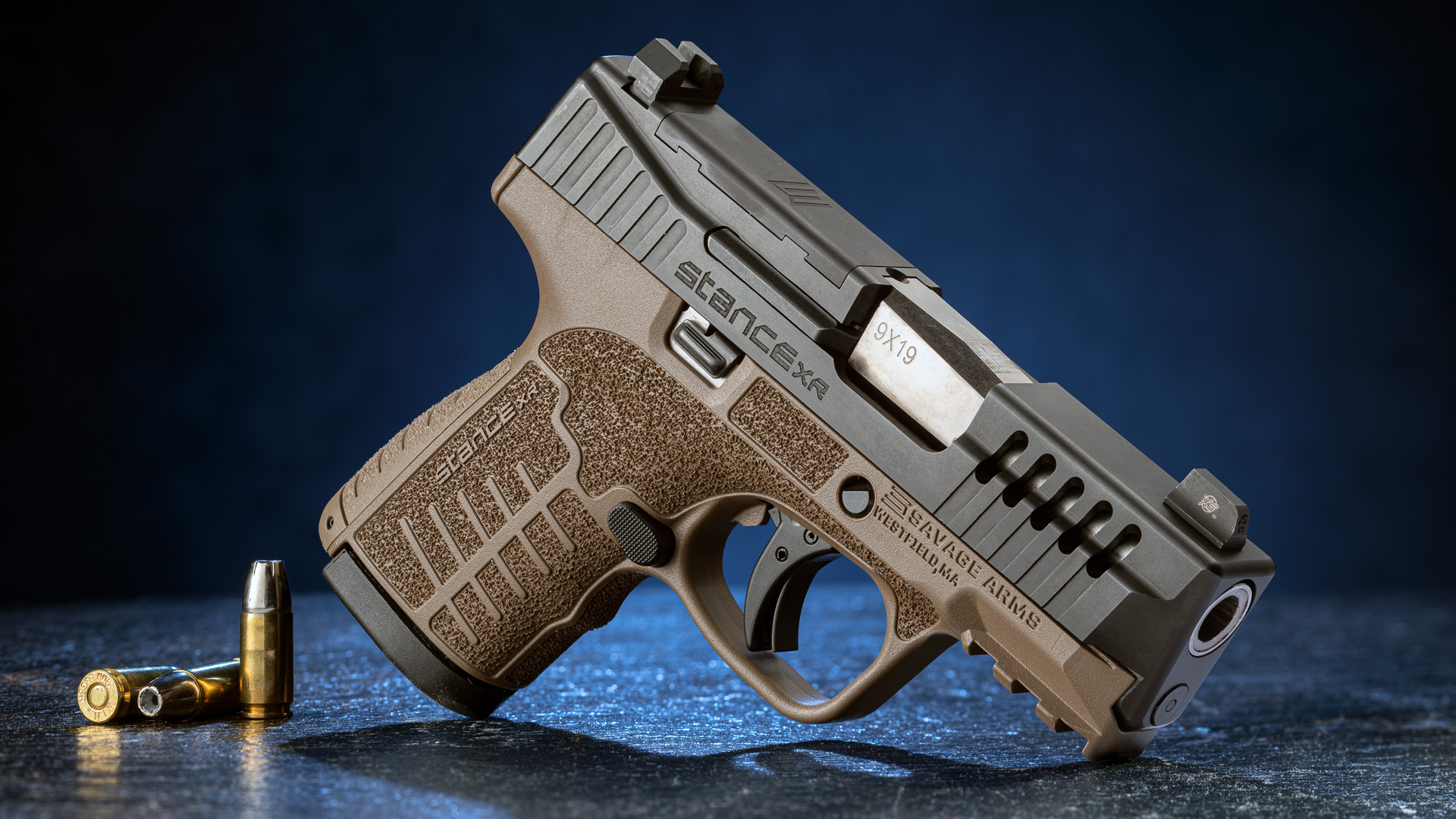

The first of its kind in U.S. military service, the M60 General Purpose Machine Gun replaced at least three other guns. Nicknamed “The Pig,” it saw service on the ground, on the water and in the air.

The Vietnam War also saw the combat debut of several U.S. military small arms, including the M16 rifle and the M60 General Purpose Machine Gun (GPMG). After a lengthy development process, the U.S. Army officially adopted the M60, chambered for the 7.62x51 mm NATO cartridge, during 1957. By the end of 1958, the first M60s began to reach the troops, introducing the concept of the GPMG into the U.S. military.
The M60 was designed to replace the existing U.S. squad automatics (the 1918A2 Browning Automatic Rifle and the air-cooled Browning .30-cal. M1919A6 machine gun), along with the air-cooled Browning M1919A4 medium machine gun and the water-cooled Browning .30-cal. M1917 heavy machine gun. When U.S. troops began to deploy to Vietnam in 1965, the new M60 went along with them.

Into the Jungle
There are many contradictory opinions about the M60. While it gained the derisive nickname “The Pig,” its overall performance in Vietnam was considered to be quite good. Throughout time, soldiers of all nations have had complaints about their equipment, and most often those gripes are related to weight.
At slightly more than 23 lbs., some infantrymen found the M60 (and its 100-round linked belts of 7.62 mm ammunition) to be too heavy. Others said it was difficult to carry. These are all valid points, but at the same time, the M60 was one of the lightest GPMGs of the era.
Also, the M60’s 7.62 mm ammunition was powerful enough to penetrate the branches and brush of the Vietnamese jungle. Its cyclic rate, usually about 600 rounds per minute, was controllable and didn’t waste ammunition.
It seems that M60s in the traditional infantry role suffered the most, as the gun required regular cleanings in the heat, humidity and mud of the Vietnamese jungle. Issues with the rotating bolt, the extractor and the exposed barrel latch lever added additional stress to the M60 gunner’s workload.
A fragile pistol grip and trigger assembly, plus a weak trigger sear that could lead to a runaway gun, didn’t help the M60’s early reputation. Even so, American ingenuity in the field, along with stateside ordnance upgrades, meant that the M60 got better over time, and it stayed in the fight.
The highly adaptable M60 could be found almost anywhere in Vietnam. It was carried on the backs of the sweating grunts in the rice paddies and the jungles, it was mounted on many of the vessels of the “Brown Water Navy,” working the inland waterways, and it provided the armament for most of the U.S. military helicopters hovering above the ongoing carnage. In many ways, the M60 machine gun became an inseparable part of the helicopter war in Vietnam.
To get a better idea of how the M60 was used within the tight confines of a helicopter, I asked my old pal Jim Wagner to share his experiences as a crew chief with the aviation component of the 9th Infantry Division in Vietnam.
“At the time I was a Huey crew chief, so I’m quite familiar with the M60 as we used them on the UH-1C gunships and the UH-1D troop/cargo carriers (we called them ‘Slicks’),” he recalled.
“In the 9th Aviation Battalion, Company A was the slick-ship unit in our battalion, equipped with 25 D (and later H model) Hueys. Company B was the gunship element equipped with 8 UH-1Cs. About half the C-model gunships were equipped with two 7.62 mm miniguns, one on each side, and two free-firing M60s on the sides, plus two seven-round rocket pods. The other ships had four M60s (two on each side) that were remotely controlled on flexible mounts and fired by one of the pilots.
"In addition, two standard M60s were carried inside the troop compartment. These were attached to “bungy cords,” which hung from the cabin ceiling to support much of the weight of the gun. The crew chief and the assigned gunner each cradled the butt of the M60 in their laps and fired them out the sides of the gunship.
“Because the two hand-held M60s were not limited in their arc of fire it was common that in the heat of a hectic firefight that one of the gunners would end up hitting their own Huey’s landing skids, cabin floor or the tail boom. That kind of friendly [fire] created an embarrassing and regrettable circumstance, with the off-target gunner taking a lot of ribbing.”
The M60s on the Huey slicks were mounted on a ridged metal pedestal post with stops incorporated to allow 180-degree front-to-back and 90- to about 30-degree fields of fire up-and-down. This system eliminated the possibility of shooting up your own aircraft.

“The gun was fed from a large metal bin mounted directly below and outboard of the gun mount, and held about 500 rounds of belted, disintegrating-link, 7.62 mm ammunition. The standard belt carried a tracer to every four rounds of ball ammunition. Running from the left side of the ammunition bin up to the side breech of the pedestal-mounted M60 was a flexible aluminum feed chute.
"We had some trouble with the feed chute, at times the M60 belts would get hung up inside the chute, causing the belt to break or jam the gun. Since this always happened at the worst possible times, a simple ‘field expedient’ was developed to fix it.
"By using the thin aluminum adapter plate that clipped to the opening in the M60’s breech, we found that a standard ‘C’ Ration fits snugly in place between two small tabs of the adaptor plate. The feed chute was eliminated so the belted rounds fed freely from the metal storage can over the C-Ration can into the breech of the gun.

“There was a standard weatherproof catch basket for expended shell casings that attached to the right-side ejector of the M60, designed to stop the shell casings from bouncing around the cargo compartment. Unfortunately, the bulky casing basket added wind resistance in the slip stream and made it harder to control the M60. In many cases we eliminated the basket and let the empty casings collect on the floor and cleaned them out after the mission. There were some things you just had to live with.

“We modified the M60s on our slick ships by eliminating the hand guard on the barrel, the buttstock, pistol grip and the complete trigger assembly. In place of the normal M60 trigger we added an M2 .50-caliber-style twin grip trigger assembly with a thumb activated ‘butterfly’ firing button. A thin metal rod running down the bottom of the breech assembly connected the twin grip to the firing solenoid. We also added a large multi-ring folding rear sight. The standard M60 barrel bipod was retained as was the carrying handle. Ultimately, this made the gun lighter and easier to use in the slip stream.
“Compared to using the M60 on the ground, the cooling effect of the slipstream helped keep the barrel from overheating or rounds cooking off in the breech when you fired long bursts. In the air, we depended on the volume of our fire more than anything else, so I fired much longer bursts from the Huey than I ever did on the ground.
"Inside our helicopters, the gunners were officially limited to about 1,000 rounds of 7.62 mm ammunition. Our crews would be damned before they were out-gunned or out of ammunition, so we normally carried twice the official allotment of ammo and didn’t worry about the extra weight.

“As time permitted, my gunner and I would break down a new belt of ammo and add additional rounds of tracer to it, usually like every third shell. This was a time-consuming process, but it gave us the ability to get ‘on target’ faster. We also inspected all new belts of M60 ammunition to make sure no rounds were too far back or too far forward in the links, either of which could cause a jam.
“We had two types of face visors in our flight helmet. One was clear plastic and the other was heavily tinted. I used the tinted visor because you could spot a bright muzzle flash in ground cover much faster.
“As for my own experiences with the M60, despite it being subjected to rain, dust, flying dirt or sprays of mud, it never let me down and always operated perfectly. We carefully cleaned our M60s after each mission and kept them just lightly oiled and lubed. That way dust or grit didn’t mix in with the small moving parts and cause a stoppage. I felt it better that the gun fired a little hot than have it jam.

“I think the 7.62 mm round was more effective than the M16s standard 5.56 mm ammunition. Since it was larger and heavier, the M60’s ammunition could cut through branches, thick grass, brush or even several inches of wood and still reach out and punish an enemy.”
Many American veterans remember the M60 machine gun. Some of them recall it fondly, others less so. Regardless, during the Vietnam War the M60 faithfully fulfilled its role as a general purpose machine gun on land, at sea and in the air. Fortunately for America, the “Pig” did fly over Vietnam, much to the chagrin of the Viet Cong and the NVA.

The Army’s M60 Machine Gun
Like the great majority of U.S. military small arms, the 7.62 mm Machine Gun M60 was designed and developed outside of the government establishment. The Inland Division of General Motor Corp., assisted by Bridge Tool & Die Works, developed the M60, and these firms deserve the credit for this excellent gun. After service testing under severe conditions, the M60 was adopted and this was announced on Jan. 30, 1957.
The M14 rifle and M60 machine gun together make up the infantry weapon systems that the Army adopted at that time.
Both fire the standard 7.62 mm NATO cartridge. The M60 replaced the M1919A4 and M1919A6 air-cooled machine guns and the M1917A1 water-cooled machine gun, which were the standard .30-cal. ground machine guns for many years. All three of these firearms, which weighed from 31 to 42 lbs. each, were replaced by the M60, which weighs 23 lbs. with its bipod.
The gun has a folding carrying handle at the balance point. The Army-developed bar-type flash suppressor is unusually effective in preventing flash, and this is important in not disclosing the gun’s position and in not blinding the gunner during night combat.
Overall length of the M60 machine gun, including flash suppressor, is 43 1/2".
The M60 is gas-operated, air-cooled and fed with a disintegrating-link belt. It is usually fired on its bipod, which is permanently attached at the muzzle and folds back along the barrel when not in use, or from the M122 tripod mount, which weighs only 15 lbs.
Its light weight, low cyclic rate of about 550 rounds per minute, and soft recoil permit it to be fired from the hip and even from the shoulder while standing or walking. A hinged buttplate keeps the butt in position during shoulder firing.
The gas cylinder operates on the cutoff-and-expansion principle, in a manner similar to that of the M14 rifle, which has been described in Rifleman. This minimizes stress on the working parts and softens the recoil, making long-continued firing much easier for the gunner.
The M60 barrel can be taken out and replaced with a new one in a few seconds, permitting continuous fire. Unlike the Browning machine guns formerly standard, it requires no headspace adjustment. The barrel’s bore is chromium-plated, and also lined with Stellite in the rear 7 1/2". These features greatly lengthen its life.
—Col. E.H. Harrison, Associate Technical Editor




































